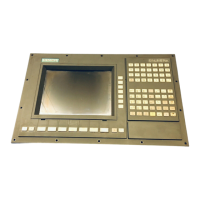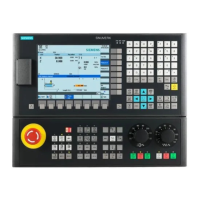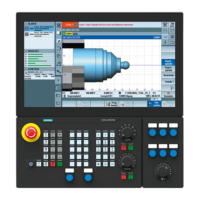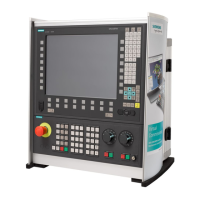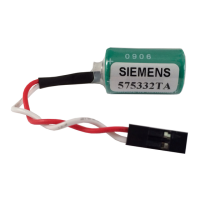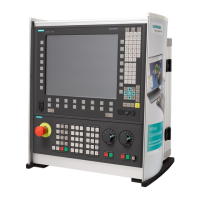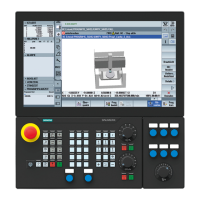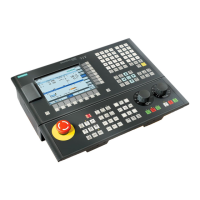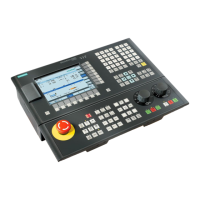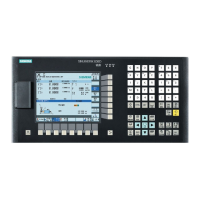11.03 3 Safety-Related Functions
3.1 Basic mechanisms of SI functions
© Siemens AG 2003 All Rights Reserved
SINUMERIK 840D/SIMODRIVE 611 digital SINUMERIK Safety Integrated (FBSI) - Edition 11.03
3-73
To obtain the criterion for triggering, the following SI system variables have
been introduced:
$VA_STOPSI: axial system variable that contains the current stop. In the
case of value 4, a Stop E is active for this drive.
$A_STOPESI: global system variable that displays a value not equal to 0 to
indicate that a Stop E is active on one of the axes. This
variable saves the user having to search through all of the
axes.
Note
STOP E only produces a different response than STOP D if the user has
configured the ESR function extended stop and retract and initiation of the
ESR is programmed depending on $VA_STOPSI or $A_STOPESI.
Kowever, if ESR is not active, STOP E behaves like a STOP D. If the ESR
configuration is incorrect, there is a delay up to 2 IPO cycles compared to
STOP D until the braking operation is initiated. Possible causes:
• The initiation of the ESR as static synchronous action does not take into
account the system variables $VA_STOPSI or $A_STOPESI.
• ESR is neither parameterized nor enabled.
For other incorrect ESR programming, a delay by the time
$MC_ESR_DELAY_TIME1 and $MC_ESR_DELAY_TIME2 is possible. After
these times have elapsed, braking is initiated at the current limit. The cause
could be:
• The retraction position cannot be reached within the specified time.
The STOP F response is permanently assigned to the crosswise data
comparison function. Dormant errors in the drive and control systems are
detected.
• Effect:
When a discrepancy is detected between the drive and NCK monitoring
channels the responses are as follows:
Dormant errors are detected even if there is no safety function active. The
saved message "defect in a monitoring channel" is output on both the drive and
control sides and can only be acknowledged by means of the NC-RESET key.
The message does not cause machinery to be interrupted. A system restart is
prevented by an internal NC start/traversing inhibit.
Dormant errors are detected. A STOP B/A response is initiated in the drive and
control system (refer to description of STOP B).
Exception: If a STOP C/D/E is already active. (refer to Table 3-4, "Configurable
stop responses").
Using MD 36955 $MA_SAFE_STOP_SWITCH_TIME_F, a delay time can be
parameterized to initiate a STOP B. Within this time, an NC controlled response
can be initiated by the machinery construction OEM – e.g. ESR. After this time
has expired, the axis involved is braked with STOP B, even if, in the meantime,
a stop with a higher priority than STOP F (STOP E,D,C) is present. Using the
system variables $VA_XFAULTSI and $A_XFAULTSI, bit 1, it can be identified
whether a STOP F was initiated that then is followed by a STOP B. In the delay
time up to a STOP B, an ESR or braking along the machined path can be
initiated (e.g. by writing to $AC_ESR_TRIGGER or by initiating an external
STOP D).
Description of STOP F
Response if no safety
functions are active:
Response if one safety
function is active:
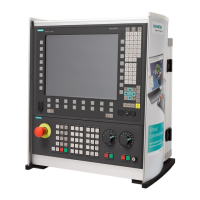
